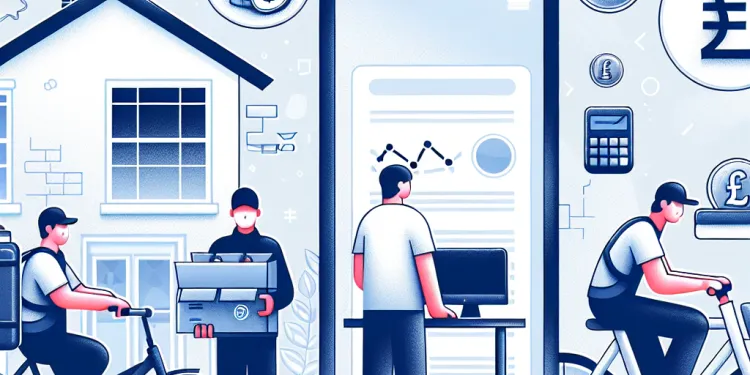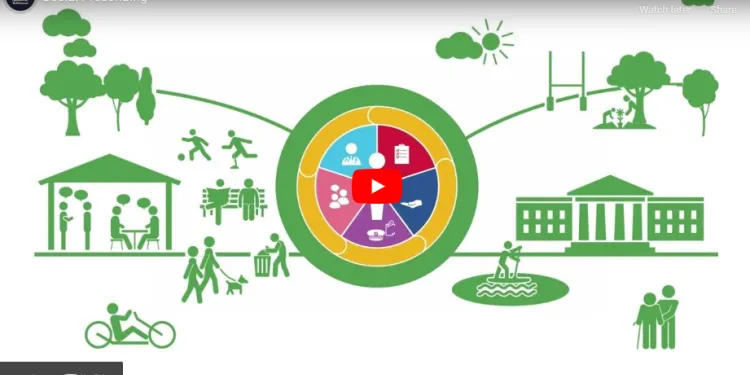Find Help
More Items From Ergsy search
-

Lone Workers
Relevance: 100%
-

UK's Elderly Population Faces Growing Loneliness Crisis
Relevance: 50%
-

Strategies for Reducing Loneliness and Social Isolation in Urban Areas
Relevance: 47%
-

Are gig workers entitled to workers' compensation?
Relevance: 43%
-

Social prescribing in practice: supporting social prescribing link workers
Relevance: 43%
-

Social Prescribing Link Workers are part of new health and wellbeing services in NHS surgeries
Relevance: 39%
-

What are my rights as a Gig Worker?
Relevance: 38%
-

Do gig workers have the right to unionize?
Relevance: 36%
-

Are gig workers entitled to sick leave?
Relevance: 36%
-

Do gig workers qualify for retirement benefits?
Relevance: 36%
-

Am I entitled to overtime pay as a gig worker?
Relevance: 36%
-

Is job security a right for gig workers?
Relevance: 36%
-

Are gig workers protected against wrongful termination?
Relevance: 35%
-

Do gig workers have access to unemployment benefits?
Relevance: 35%
-

Do gig workers have the right to a minimum wage?
Relevance: 35%
-

Innovative App Aims to Combat Loneliness Among Elderly
Relevance: 35%
-

Can I receive health benefits as a gig worker?
Relevance: 35%
-

How can a Social Prescribing Link Worker help you? #MeetYourGPTeam
Relevance: 34%
-

Are zero-hour contract workers entitled to the National Living Wage?
Relevance: 34%
-

Do gig workers have the right to transparency in pay and fees?
Relevance: 34%
-

What are my rights regarding workplace safety as a gig worker?
Relevance: 33%
-

What can I do if I face discrimination as a gig worker?
Relevance: 33%
-

Do gig workers have intellectual property rights over their work?
Relevance: 32%
-

Can I claim expenses as a gig worker?
Relevance: 32%
-

How can healthcare workers protect themselves from Marburg virus infection?
Relevance: 30%
-

Am I considered an employee if I am a gig worker?
Relevance: 29%
-

How can I address payment disputes as a gig worker?
Relevance: 24%
-

Social Prescribing
Relevance: 24%
-

Is it better to stay in a relationship for the sake of not being alone?
Relevance: 23%
-

Social prescribing – what is it?
Relevance: 21%
-

Social prescribing in south east London
Relevance: 20%
-

Introducing Social Prescribing - short video
Relevance: 19%
-

Who is eligible for the National Living Wage?
Relevance: 18%
-

Are employers legally required to pay the National Living Wage?
Relevance: 17%
-

Are UK's Post-Pandemic Work Habits Harming Mental Wellbeing?
Relevance: 17%
-

How does the National Living Wage differ from the National Minimum Wage?
Relevance: 17%
-

Why is the National Living Wage being increased?
Relevance: 17%
-

How is the National Living Wage calculated?
Relevance: 16%
-

What is the new UK National Living Wage for 2026?
Relevance: 16%
-

What is a social prescriber, and how do they support general practice?
Relevance: 15%
Lone Workers: Ensuring Safety and Well-being
Lone workers are individuals who work by themselves without close or direct supervision. In the United Kingdom, lone working is prevalent across various sectors, including healthcare, construction, agriculture, and more. While lone working offers flexibility and autonomy, it also presents unique challenges and risks that need to be managed effectively.
Defining Lone Workers
Lone workers can be employees, freelancers, or contractors who perform their jobs in isolation. This can happen during night shifts, remote locations, or even within large premises where workers are isolated from colleagues. Regardless of the scenario, it's essential that employers recognize and address the specific needs of lone workers to ensure their safety and productivity.
Risks Associated with Lone Working
Lone workers face a heightened risk of accidents, health emergencies, and personal safety issues. Without the immediate support of colleagues, minor incidents can quickly escalate. Common risks include injury due to manual handling, slips and falls, exposure to hostile environments, and threats from others. Employers must conduct thorough risk assessments to identify and mitigate these hazards.
Legal Obligations for Employers
In the UK, the Health and Safety at Work Act 1974 places a legal duty on employers to ensure the health, safety, and welfare of their employees, including lone workers. The Management of Health and Safety at Work Regulations 1999 further require employers to carry out risk assessments and institute measures to minimize risks. Failure to comply can result in legal action and serious consequences for employers.
Safety Measures and Best Practices
Implementing effective safety measures is crucial for mitigating risks associated with lone working. Employers should ensure comprehensive risk assessments are performed regularly and provide lone workers with adequate training and resources. Communication is key; using technology like mobile apps, GPS tracking, and regular check-ins can help monitor the well-being of lone workers. Establishing clear emergency procedures and ensuring workers know how to access first aid and support services is also vital.
Conclusion
While lone working presents unique challenges, adopting a proactive approach to health and safety can ensure the welfare of lone workers. By understanding the risks, fulfilling legal obligations, and implementing robust safety measures, employers in the UK can create a safer working environment for those who work alone.
Lone Workers: Staying Safe and Healthy
A lone worker is someone who works alone. This can be in jobs like healthcare, building, or farming. Working alone can give you freedom, but it can also be risky. It is important to keep lone workers safe.
What is a Lone Worker?
Lone workers are people who work alone. They might work at night, in faraway places, or in a big building away from others. It is important for bosses to help lone workers stay safe and do their jobs well.
Risks of Working Alone
Lone workers can get hurt more easily. Without other people around, small problems can become big. They might get hurt lifting things, slipping, falling, or from other dangers. Bosses need to look for these dangers and fix them.
Rules for Bosses
In the UK, bosses must keep their workers safe. This includes workers who are alone. They need to check for dangers and make things safer. If they don't, they can get in trouble with the law.
How to Stay Safe
To keep lone workers safe, bosses need to check for dangers often. They should train workers and give them the tools they need. Talking is important too. Using phones, GPS, and regular check-ins helps keep track of lone workers. Having a plan for emergencies and knowing where to find help is very important.
Summary
Working alone can be hard, but careful planning can help keep workers safe. By knowing the dangers, following the rules, and using good safety steps, bosses in the UK can make sure lone workers are safe.
Frequently Asked Questions
What is a lone worker?
A lone worker is an individual who performs their job in isolation from other workers, without close or direct supervision, which puts them at greater risk in specific situations.
What are the legal obligations for employers of lone workers in the UK?
Employers in the UK have a duty of care to lone workers under the Health and Safety at Work Act 1974 and the Management of Health and Safety at Work Regulations 1999, requiring them to conduct risk assessments and take steps to ensure their safety.
What risks are associated with lone working?
Risks can include accidents or emergencies, sudden illness, violence or abuse, lack of direct supervision, and difficulty in securing help if needed.
How can employers ensure the safety of lone workers?
Employers can ensure safety by conducting thorough risk assessments, providing proper training, equipping workers with communication devices, establishing clear procedures for emergency situations, and regular monitoring.
What should a lone worker do in case of an emergency?
Lone workers should be trained in emergency procedures including how to contact emergency services, use any provided safety equipment, and follow preset protocols for specific scenarios.
Are specific industries more prone to having lone workers?
Yes, industries such as security, healthcare, utilities, delivery services, estate management, and retail often have roles that involve lone working.
What should be included in a lone working risk assessment?
A risk assessment should include identification of hazards, assessment of who might be harmed and how, evaluation of risks, recording findings, and reviewing the assessment regularly.
How often should lone working risk assessments be reviewed?
Risk assessments should be reviewed regularly, especially when there are changes in work processes, changes in lone working environments, or after any incident involving a lone worker.
What technologies can assist in the safety of lone workers?
Technologies such as GPS tracking, panic alarms, lone worker apps, and two-way radios can help in ensuring the safety of lone workers by allowing for constant contact and quick emergency responses.
Is it mandatory to have a lone working policy?
While not explicitly mandatory, having a lone working policy is strongly recommended as it demonstrates an employer’s commitment to health and safety and provides a clear framework for managing lone working risks.
What should be included in a lone working policy?
A lone working policy should include definitions, responsibilities, risk assessment procedures, control measures, communication protocols, training requirements, and emergency procedures.
How important is training for lone workers?
Training is crucial for lone workers to ensure they understand the risks, are aware of safety protocols, and know how to respond in emergency situations.
Can lone workers refuse to work alone if they feel unsafe?
Yes, lone workers have the right to refuse to work alone if they legitimately feel that their safety or health is at risk, and they should report their concerns to their employer immediately.
How can communication be maintained with lone workers?
Communication with lone workers can be maintained through regular check-ins via phone calls, text messages, lone worker apps, or any other agreed-upon method that ensures consistent contact.
Are there any specific requirements for lone workers working at night?
Yes, extra precautions should be taken for lone workers at night including enhanced communication, additional training on dealing with violent or threatening situations, and ensuring safe access to and from work locations.
What is a lone worker?
A lone worker is someone who works by themselves. They do not have other people around them when they work.
If you find reading hard, you can try these ideas:
- Ask someone to read with you.
- Use a computer or phone to read the text out loud.
- Take breaks so you do not get tired.
A lone worker is someone who works all by themselves. They do not have other people or a boss close by. This can make their job riskier in certain situations.
What do bosses in the UK have to do for people who work alone?
Employers in the UK have rules to keep workers safe. Some people work by themselves. These people are called 'lone workers'. It is important for bosses to: - Make sure lone workers are safe - Check the workplace is safe - See if the worker needs training - Provide a way to get help quickly Tools that can help: - Have a phone or alarm for emergencies - Use apps or devices that track if the worker is safe By doing these things, bosses make sure lone workers are okay and safe.In the UK, bosses must look after workers who are alone. This is part of the law called the Health and Safety at Work Act 1974. There are also rules from 1999 that say bosses must check for dangers and make sure workers are safe.
What dangers come with working alone?
Working alone can mean you are on your own with no one else around to help.
Here are some risks and things to be careful about when working alone:
- If you get hurt, there may be no one to help you right away.
- There might be a fire or other emergency, and you might need help.
- You may feel scared or stressed without anyone to talk to.
It is important to stay safe and know what to do if something goes wrong.
Tools or techniques that can help:
- Carry a phone to call for help if needed.
- Tell someone where you are and when you'll be back.
- Learn basic first aid to help yourself if you get hurt.
There are things that can be dangerous. These include accidents, sudden sickness, violence or someone being mean, not having an adult to watch over, and finding it hard to get help.
How can bosses keep lone workers safe?
Some people work alone. It is important to keep them safe. Here are some ways to do that:
- Check on them: Talk to lone workers often. Make sure they are okay.
- Give them a phone: Let them have a phone. They can call for help if they need it.
- Train them: Teach them how to stay safe while they work.
- Use safety devices: Give them alarms or other tools that can make noise if they need help.
This helps everyone feel safe at work.
Employers can keep everyone safe in the workplace. They can do this by:
- Checking for dangers (this is called a risk assessment)
- Giving workers the right training
- Giving workers tools to talk to each other, like phones or walkie-talkies
- Making clear plans for what to do in an emergency
- Checking regularly to make sure everything is safe
What to do if you are alone and there's an emergency
If you are working alone and there's an emergency, here are some simple steps to follow:
- Stay calm. Take a deep breath.
- If you can, call for help using your phone.
- Look for a safe place to go.
- If you have a safety tool or device, use it.
- Write down important phone numbers and keep them with you.
- Tell someone you trust where you are.
- Ask your boss for a plan for emergencies.
Remember, it's okay to ask others for help and to talk about safety at work.
Lone workers need to learn what to do in emergencies. They should know how to call for help, use safety gear, and follow clear steps for different situations.
Do some jobs have more people working alone?
Yes, there are some jobs where people work alone. These jobs can be in places like security, healthcare, utilities, delivery services, taking care of buildings, and shops.
What should go in a lone working risk check?
A lone working risk check is to keep someone safe when they work alone.
Here is what to put in the check:
- Hazards: What could be dangerous? Think about things that could hurt someone.
- People: Who will be working alone? Make a list of their names.
- Emergency Plan: What should they do if something goes wrong? Write down steps to get help quickly.
- Communication: How will they talk to others? Have a phone or radio ready.
- Support: Who can help them? Make sure they have someone to call if they need help.
Use easy words and simple lists to make it clearer.
Tools or Tips: Use pictures or charts if they help explain things better. It's okay to ask for help if something is hard to understand.
A risk assessment is when you check for things that might be dangerous. You need to:
1. Find out what could be dangerous.
2. Think about who could get hurt and how they might get hurt.
3. Decide how risky it is.
4. Write down what you find out.
5. Check your risk assessment often to see if anything has changed.
Using pictures, lists, or simple charts can help make this easier to understand.
How often should you check lone working risk assessments?
We need to check risk assessments often. This is very important when work methods change, when the place where people work alone changes, or after something has happened to a person working alone.
What can help keep people working alone safe?
Sometimes, people have to work by themselves, away from others. This can be in a shop, on a building site, or any place where they are not with a team.
Here are some things that can help keep them safe:
- Phones: They can call for help if needed.
- Alarms: If they are in trouble, they can use an alarm to get attention.
- GPS: This shows where they are so others can find them if something goes wrong.
- Check-ins: They can set a reminder to let someone know they are okay at certain times.
If you work alone, ask your boss for tools that help keep you safe.
There are tools that can help keep people who work alone safe. These include GPS tracking, panic alarms, apps for lone workers, and two-way radios. They help because they let you talk to someone and get help quickly if there's an emergency.
Do we need a rule for people working alone?
Even if it's not a strict rule, it's a good idea to have a guide about working alone. This shows the boss cares about keeping everyone safe. It also helps to know how to be safe when working alone.
What should you put in a lone working rules list?
A lone working rules list tells people how to stay safe when working alone. Here are some things to include:
- Say who can work alone.
- Tell how to stay in touch, like using a phone.
- Give steps to follow for safety.
- Say who to tell if there is a problem.
- Make a plan to check on the person working alone.
- Use easy tools like picture charts to explain rules.
By having these parts in your list, everyone can stay safe and know what to do.
A lone working policy is a set of rules to help people who work alone stay safe. It should have:
- Definitions: Explain what "lone working" means.
- Responsibilities: Say who does what.
- Risk Assessment: Look at what could be dangerous.
- Control Measures: Make plans to keep people safe.
- Communication: Explain how to stay in touch.
- Training: Teach how to work safely alone.
- Emergency Procedures: Say what to do in an emergency.
Try using pictures or simple charts to help. You can also ask someone to help you understand.
Why is training important for people who work alone?
Training is very important for people who work alone. It helps them know about dangers, learn safety rules, and understand what to do if there is an emergency.
Can someone say no to working alone if they feel scared?
If you work by yourself and feel scared or not safe, you can say you don't want to work alone.
Here are some ways to feel safer:
- Talk to your boss about your worries.
- Ask for someone to work with you.
- Use phones or radios to keep in touch with others.
- Take breaks if you feel upset.
Always tell someone if you feel unsafe. It is important to be safe at work.
Yes, if a worker is alone and feels unsafe, they can say no to working by themselves. They should tell their boss right away about how they feel.
How can we talk to workers who work alone?
You can stay in touch with workers who are alone by checking in often. You can do this with phone calls, text messages, special apps for lone workers, or any other way you both agree on. This makes sure you always have contact with them.
Do people working alone at night need special rules?
Yes, extra care should be taken for people working alone at night. This means:
- Talking with others more often.
- Learning how to handle scary or dangerous situations.
- Making sure it is safe to get to and from work.
Helpful tools can be using a buddy system or having a phone ready for emergencies.
Useful Links
Useful links from: Health and safety responsibilities
- NHS - Health and Safety Provides general health and safety tips for maintaining a healthy body, including advice on preventing injuries and staying safe at home and work.
- Health and Safety Executive (HSE) The national independent watchdog for work-related health, safety, and illness, providing regulations, guidance, and information to keep workplaces safe.
- Mind - Mental Health at Work Offers resources and advice on managing mental health in the workplace, including employer responsibilities and employee rights.
- RoSPA - The Royal Society for the Prevention of Accidents A UK-based charity that provides information, training, and advice on accident prevention and safety across various environments including workplaces and homes.
Useful links from: THE LAW IN 60 SECONDS | HEALTH AND SAFETY AT WORK
- NHS - Health and Safety at Work Provides information on managing stress and mental health in the workplace. Includes advice on legal responsibilities and how to handle workplace stress effectively.
- HSE - Health and Safety Executive The official site for Britain's national regulator for workplace health and safety. Offers guidelines, regulations, and resources to ensure safety at work.
- Mental Health Foundation UK-based charity providing insights into stress management, including helpful tips, resources, and strategies to improve mental health at work.
- Mind - Workplace Mental Health A leading mental health charity in the UK that provides advice and support to empower anyone experiencing a mental health problem at work. It offers resources for both employees and employers.
- Ergsy carfully checks the information in the videos we provide here.
- Videos shown by Youtube after a video has completed, have NOT been reviewed by ERGSY.
- To view, click the arrow in centre of video.
- Most of the videos you find here will have subtitles and/or closed captions available.
- You may need to turn these on, and choose your preferred language.
- Go to the video you'd like to watch.
- If closed captions (CC) are available, settings will be visible on the bottom right of the video player.
- To turn on Captions, click settings .
- To turn off Captions, click settings again.
More Items From Ergsy search
-

Lone Workers
Relevance: 100%
-

UK's Elderly Population Faces Growing Loneliness Crisis
Relevance: 50%
-

Strategies for Reducing Loneliness and Social Isolation in Urban Areas
Relevance: 47%
-

Are gig workers entitled to workers' compensation?
Relevance: 43%
-

Social prescribing in practice: supporting social prescribing link workers
Relevance: 43%
-

Social Prescribing Link Workers are part of new health and wellbeing services in NHS surgeries
Relevance: 39%
-

What are my rights as a Gig Worker?
Relevance: 38%
-

Do gig workers have the right to unionize?
Relevance: 36%
-

Are gig workers entitled to sick leave?
Relevance: 36%
-

Do gig workers qualify for retirement benefits?
Relevance: 36%
-

Am I entitled to overtime pay as a gig worker?
Relevance: 36%
-

Is job security a right for gig workers?
Relevance: 36%
-

Are gig workers protected against wrongful termination?
Relevance: 35%
-

Do gig workers have access to unemployment benefits?
Relevance: 35%
-

Do gig workers have the right to a minimum wage?
Relevance: 35%
-

Innovative App Aims to Combat Loneliness Among Elderly
Relevance: 35%
-

Can I receive health benefits as a gig worker?
Relevance: 35%
-

How can a Social Prescribing Link Worker help you? #MeetYourGPTeam
Relevance: 34%
-

Are zero-hour contract workers entitled to the National Living Wage?
Relevance: 34%
-

Do gig workers have the right to transparency in pay and fees?
Relevance: 34%
-

What are my rights regarding workplace safety as a gig worker?
Relevance: 33%
-

What can I do if I face discrimination as a gig worker?
Relevance: 33%
-

Do gig workers have intellectual property rights over their work?
Relevance: 32%
-

Can I claim expenses as a gig worker?
Relevance: 32%
-

How can healthcare workers protect themselves from Marburg virus infection?
Relevance: 30%
-

Am I considered an employee if I am a gig worker?
Relevance: 29%
-

How can I address payment disputes as a gig worker?
Relevance: 24%
-

Social Prescribing
Relevance: 24%
-

Is it better to stay in a relationship for the sake of not being alone?
Relevance: 23%
-

Social prescribing – what is it?
Relevance: 21%
-

Social prescribing in south east London
Relevance: 20%
-

Introducing Social Prescribing - short video
Relevance: 19%
-

Who is eligible for the National Living Wage?
Relevance: 18%
-

Are employers legally required to pay the National Living Wage?
Relevance: 17%
-

Are UK's Post-Pandemic Work Habits Harming Mental Wellbeing?
Relevance: 17%
-

How does the National Living Wage differ from the National Minimum Wage?
Relevance: 17%
-

Why is the National Living Wage being increased?
Relevance: 17%
-

How is the National Living Wage calculated?
Relevance: 16%
-

What is the new UK National Living Wage for 2026?
Relevance: 16%
-

What is a social prescriber, and how do they support general practice?
Relevance: 15%